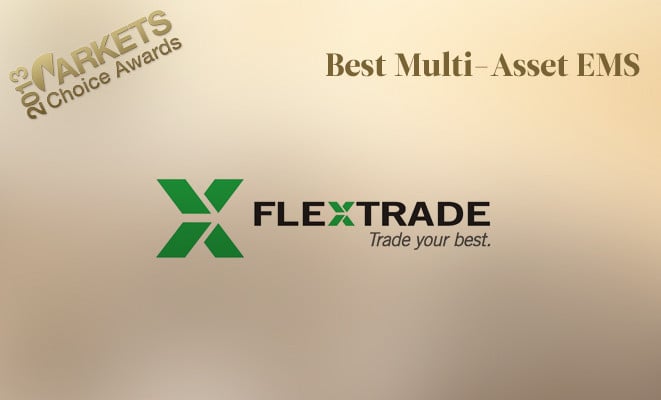As more asset classes have tracked equities in the migration to electronic trading, FlexTrade Systems has expanded the multi-asset capabilities of its FlexTRADER Execution Management System.
“We started with equities and expanded to FX, futures and options,” said Vijay Kedia, FlexTrade’s chief executive. “As a result, we have created a powerful multi-asset trading platform, while at the same time, many customers use us for our strengths in a single asset class alone. In that regard, we are unique.”
 Vijay Kedia, chief executive, FlexTrade Systems
Vijay Kedia, chief executive, FlexTrade Systems
FlexTrade, headquartered about 15 miles from midtown Manhattan in Great Neck, New York, has been building EMS technology for almost 17 years. Its worldwide client base spans more than 175 buy- and sell-side firms, including investment banks, hedge funds, asset managers, commodity trading advisors and institutional brokers.
“There are many systems which call themselves ‘multi-asset’ just because they can route orders to broker algorithms for FX or options,” Kedia told Markets Media. “We have teams of experts with deep knowledge in each asset class to provide the depth of functionality that each asset class demands.”
The FlexTRADER EMS seeks and facilitates direct access to multiple sources of liquidity with “incomparable robustness and speed,” according to FlexTrade. From a single platform, orders are routed to various points of execution, including broker-dealers, dark pools, ECNs and exchanges; FlexTRADER’s capabilities span multi-asset EMS, pre-trade, real-time, post-trade analytics and risk management, smart order routing, complex event processing, cross-asset algorithmic trading, real-time asset allocations and commission management.
FlexTrade has won accolades for its FX algorithmic capabilities. “We became a disruptive force in the FX EMS space as the very first provider of aggregation in a broker-neutral fashion,” said Kedia. “Our FX capabilities are well-recognized in the industry because we brought a level of transparency to FX that did not exist.”
MaxxTrader, a white-label trading system for sell-side institutions operating in the FX markets, is designed to allow institutions to privately aggregate and issue price information to the markets and clientele.
“What we offer in FX is a broad suite of products for broker-dealers, hedge funds, and money managers,” said Kedia. “Firms can use our FX system for liquidity aggregation, algorithmic trading, risk management, real-time margin control, intelligent quoting and white labeling.”
As equities have become increasingly commoditized—with the attendant compacted profit margins—more market participants are looking to other asset classes, especially options, said Kedia.
In 2012, FlexTrade acquired options-software provider Derivix, which specialized in portfolio risk management, scenario analysis and execution management. FlexTrade has combined Derivix with its own FlexOpt product to create a bigger and better options trading platform for pricing, real-time analytics, portfolio risk management, and multi-broker electronic execution.
The platform provides direct access to all U.S. options exchanges, as well as more than 100 broker-provided direct market access links and algorithms. “The Derivix acquisition provides us with deeper insight for bolstering our offering in the options space,” said Kedia. “It’s been a great complement.”
“We have teams of experts with deep knowledge in each asset class.” Vijay Kedia, FlexTrade’s chief executive
FlexTrade is also supporting OpenMama, an industry-standard, open, vendor-neutral messaging and market data platform, as a means of providing exchange market data clients with direct access to FlexEdge, its predictive analytics platform for trading U.S. equities.
“FlexEdge supplies intraday volume forecasts for use by sell-side and buy-side institutions,” said Kedia. “These volume forecasts represent a substantial improvement over traditional volume estimation techniques and can help clients manage slippage costs, improve order sizing and reduce volume-weighted average price tracking error.”
Predictive analytics is a fairly new forecasting tool for the electronic trading space.
Trading is becoming increasingly algorithmic and increasingly computer-driven. “Accurate information is paramount,” Kedia said. “Machines are consuming market data and making decisions based upon it. Being able to accurately predict future volume provides key advantages to algorithms and to traders executing their orders manually.”














